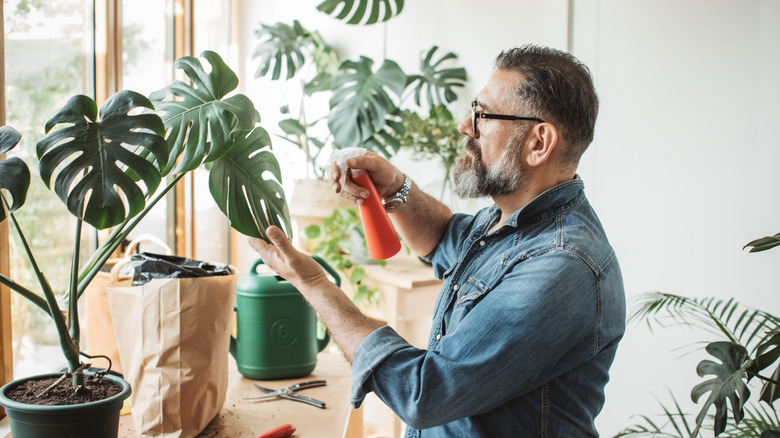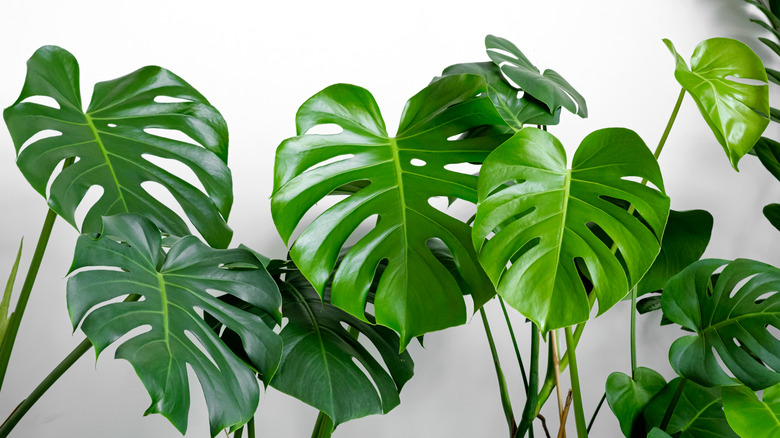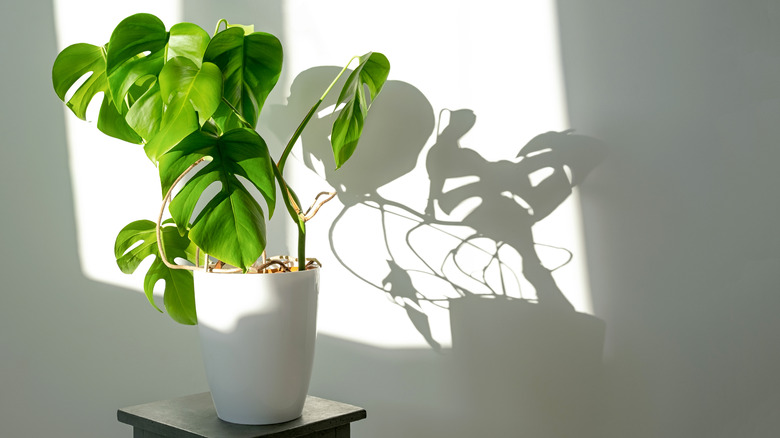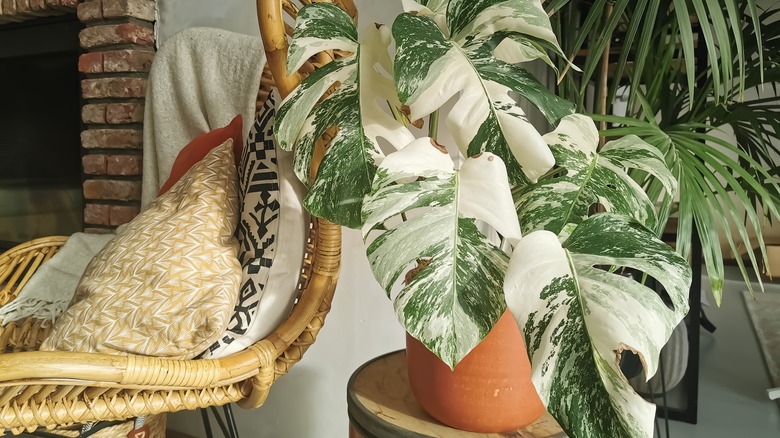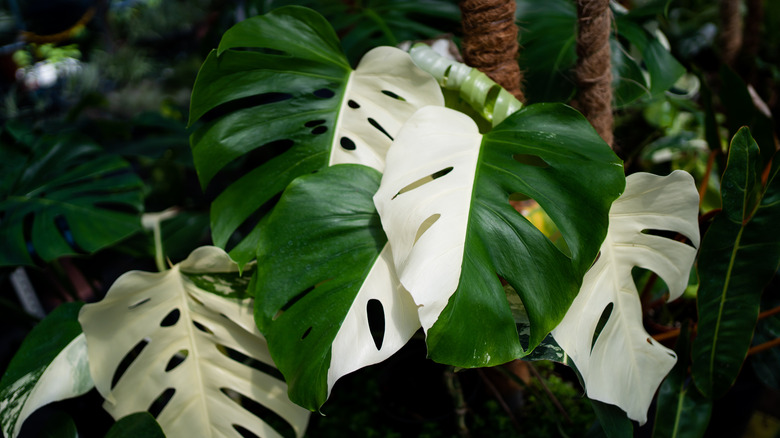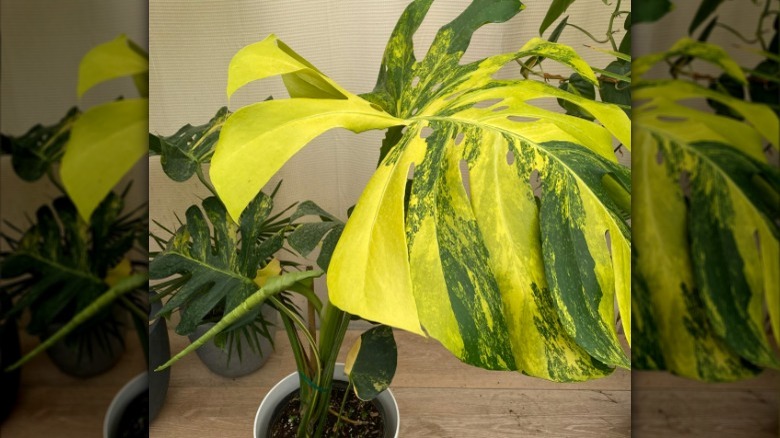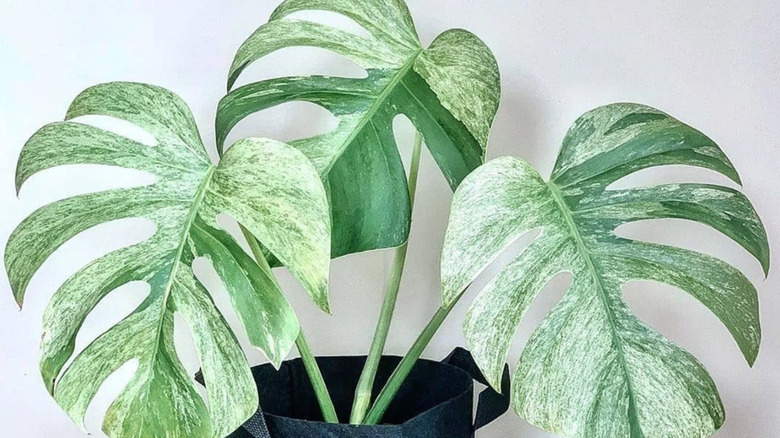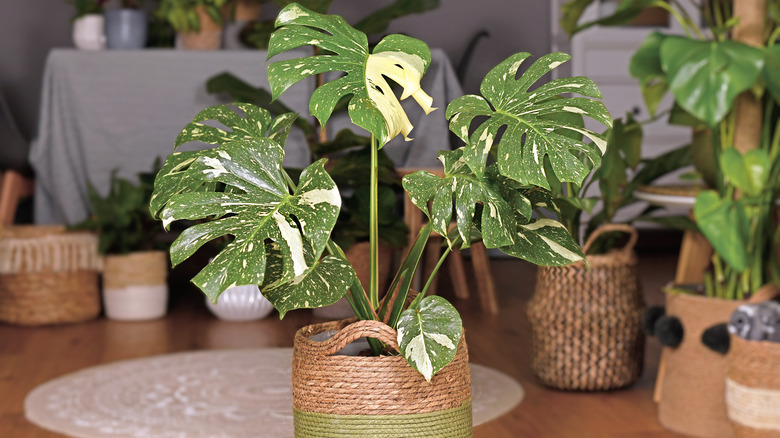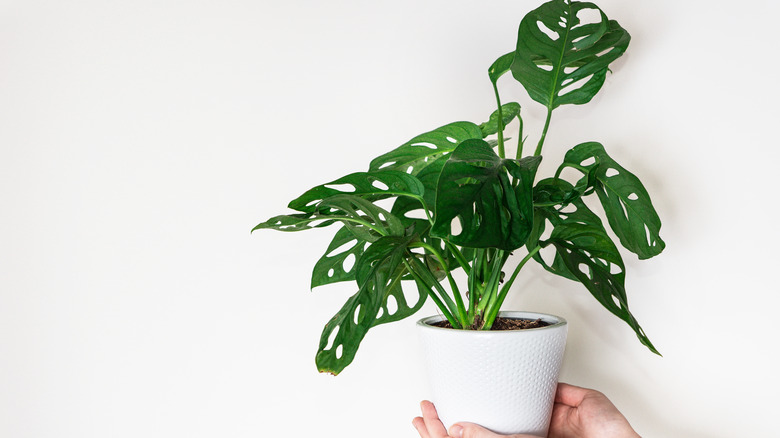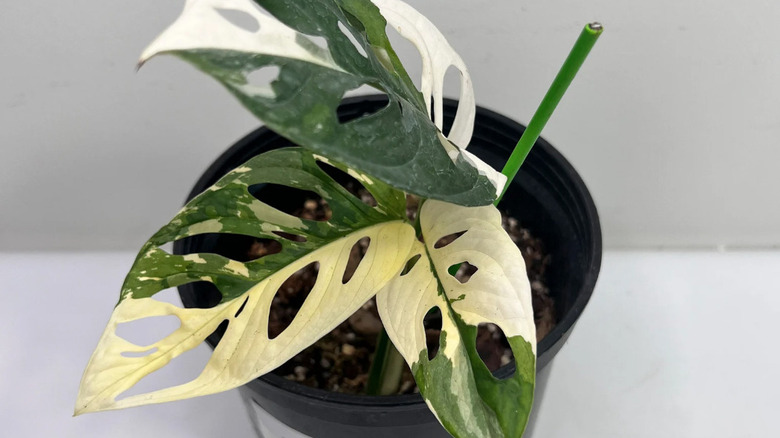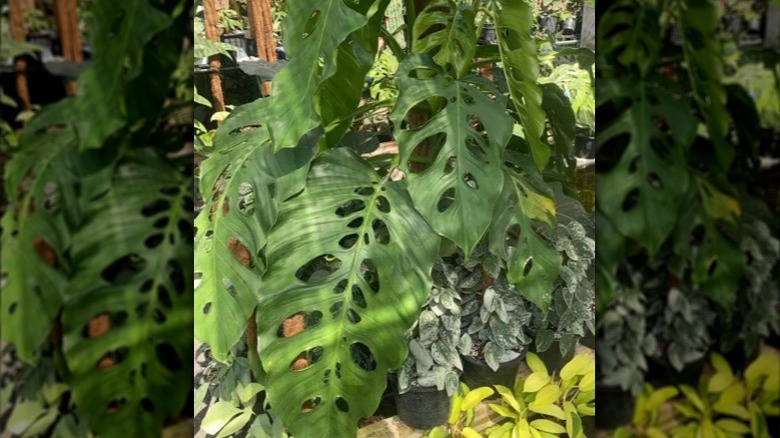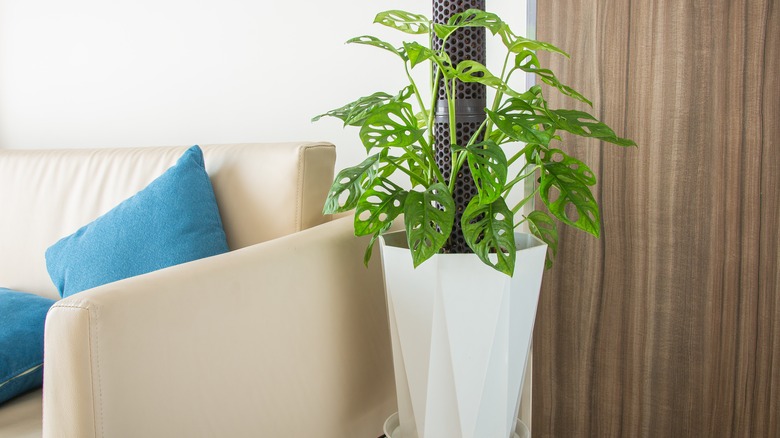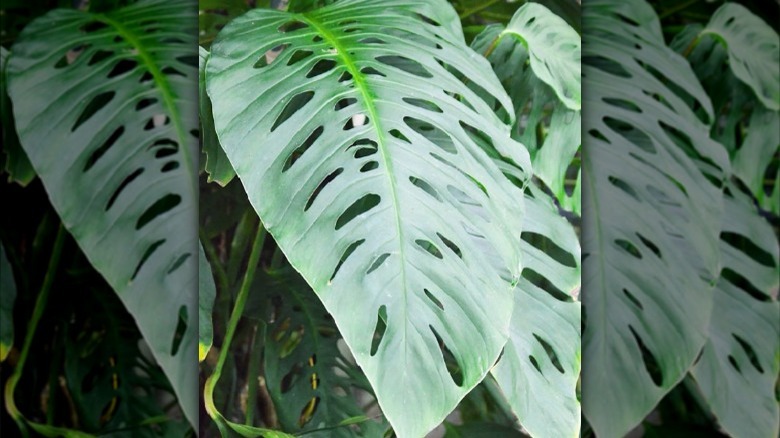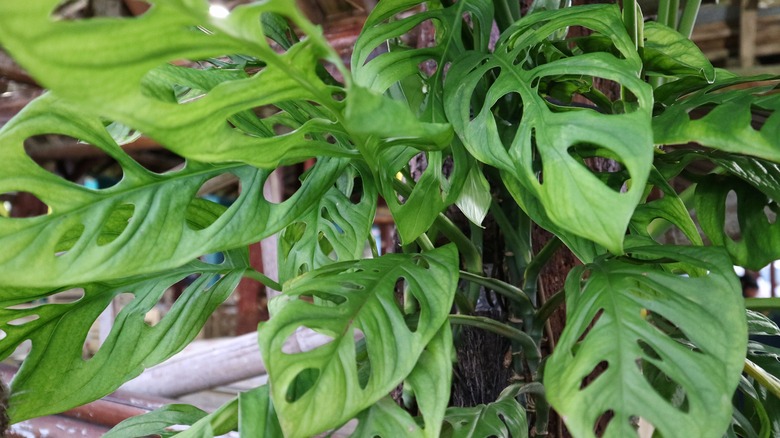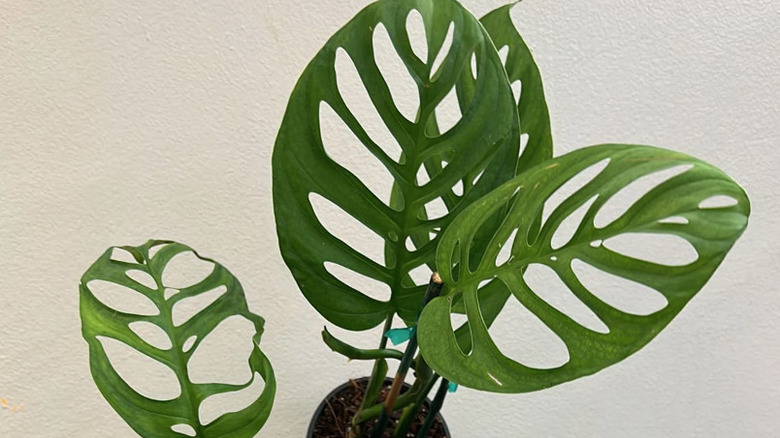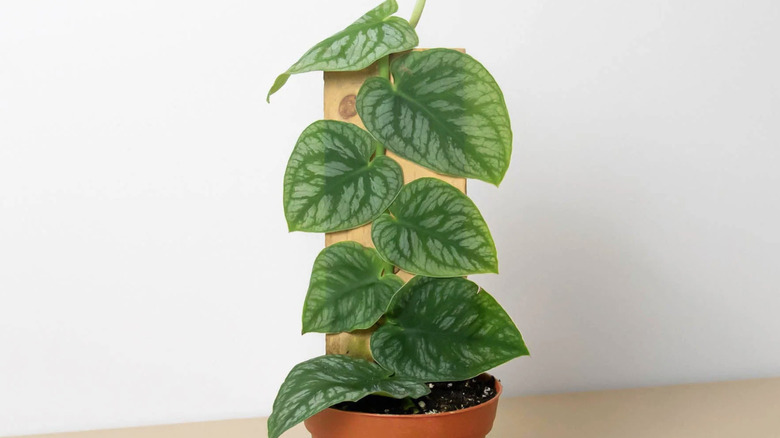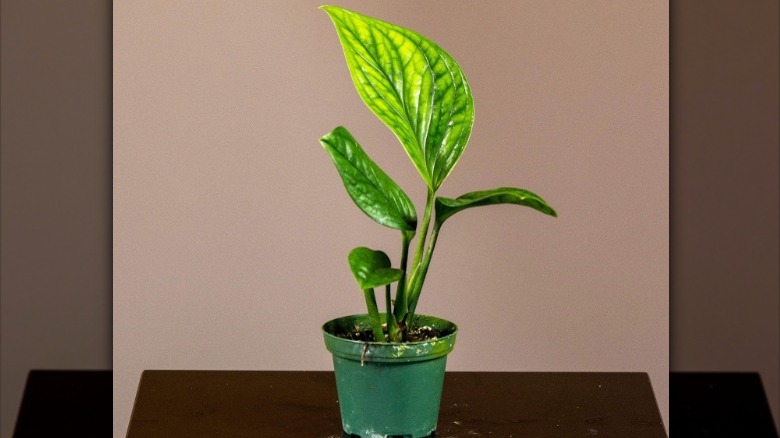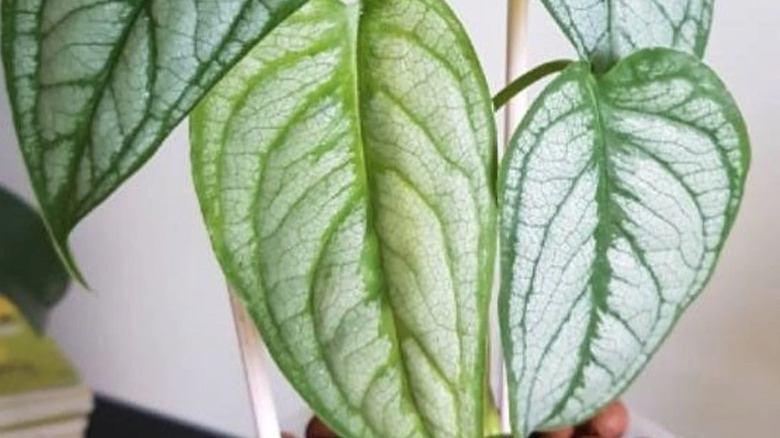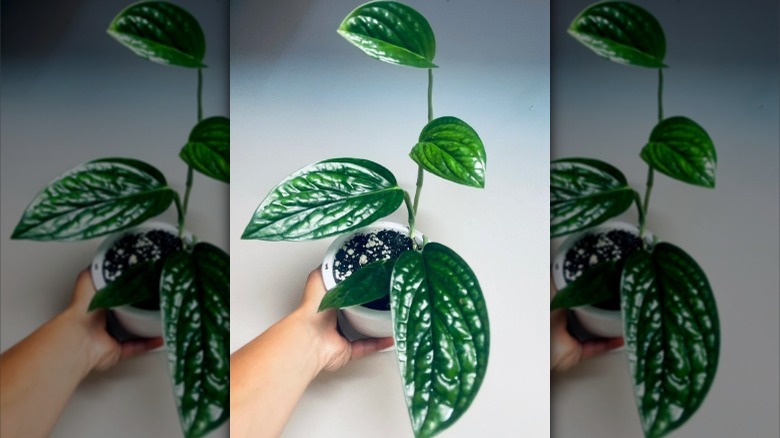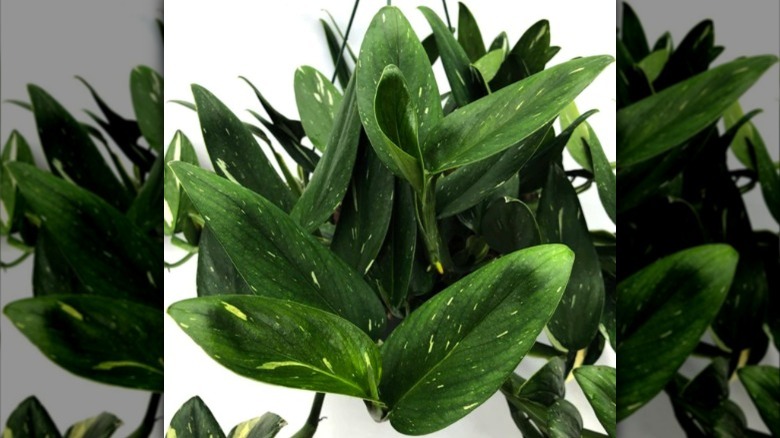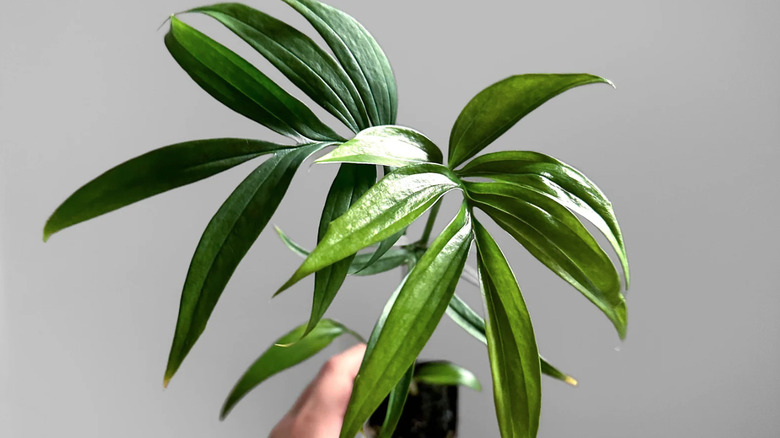20 Monstera Plant Varieties You Should Know About
We may receive a commission on purchases made from links.
Monstera plants are known for their trailing vines, tropical appearance, and fenestrated leaves, or those with splits or holes. Originating in Central and South America, there are currently 45 known species of this plant, but not all of them can be bought from regular retailers — and if they can, the rarest species are quite pricey. In the wild, monsteras can flower and even produce a white fruit, but this most likely will not occur indoors.
Though these plants are native to tropical places, they're actually quite easy to grow in the average home. Every species requires at least six hours of indirect sunlight a day, but make sure to keep them out of direct sun to avoid damaging the leaves. They also thrive in moist soil and don't need to be watered often; wait for the top layer to dry before watering again. Because they're tropical, they also love humidity and need at least 50% to 60%, so the best place to keep them may be in a bright bathroom. However, keep in mind that every species is toxic when consumed by pets or humans, according to Monstera Plant Resource. Below, you'll find 20 different monstera species you can purchase and place in your home.
1. Swiss cheese plant
The Swiss cheese plant (Monstera deliciosa) is one of the most common monstera species. This plant is known for its deep fenestrations, or slits, in the leaves, and when grown indoors, it can reach 8 feet tall, while the leaves can even grow to be 3 feet wide. They're known for quickly growing and are even called an invasive species in places like Hawaii and Florida.
2. Borsigiana
A variety of deliciosa, the borsigiana (Monstera deliciosa var. borsigiana) can be difficult to differentiate from the common Swiss cheese plant, as it looks extremely similar. One way to tell them apart is by their size, as the borsigiana is usually slightly smaller when grown to maturity, at 5 to 6 feet tall and 3 feet wide. Another difference is that, when grown completely, the fenestrations, or splits, can appear more symmetrical.
3. Variegated monstera
The variegated monstera (Monstera deliciosa 'Albo Borsigiana'), also referred to as the monstera albo, is most known for its unique color, as it has large, naturally occurring white patches strewn over the green leaves. This type is quite rare, making it more expensive than other varieties. When growing it indoors, it's wise to give this plant a moss pole to climb. If you do this, it could grow 10 feet tall and 3 feet wide.
4. Monstera albo
Although extremely similar to the variegated monstera in look and color and even sharing the common name monstera albo, this plant is actually known as a borsigiana (specifically, Monstera deliciosa var. borsigiana 'Albo Variegata'). When in the wild, the deliciosa species can grow fruit, but the borsigiana cannot. Further, the deliciosa type doesn't technically need a moss pole to grow (though it will enjoy it), but the borsigiana does. Just like the typical borsigiana, this plant will grow 6 to 7 feet tall. This specific image above is called a half moon, as the leaf is split in half between white and green.
5. Monstera marmorata
Just as the albo variegata has white patches on its leaves, the monstera marmorata (Monstera deliciosa 'Aurea') has yellow spots that can sometimes appear gold. Because the leaves lack chlorophyll, this plant may need more sunlight than other varieties. These plants can also have specks of other colors like light green and cream and can grow 10 to 15 feet tall and 8 feet wide.
6. Deliciosa mint
Another deliciosa plant that's named for its color, the mint variety (Monstera deliciosa mint), has light green or mint patches instead of being all dark green. This type can look very similar to the Thai constellation variety, as it may have small specks of the lighter color, but it can also have larger streaks of the light tone. Because this species has a rare appearance, it's quite highly favored and can be pricey. It can also grow as tall as 10 feet indoors.
7. Thai con monstera
This unique type, called the Thai con monstera (Monstera deliciosa 'Thai Constellation'),is usually easy to differentiate from other types, since it has specks of white on its fenestrated leaves. When grown indoors, this type can grow up to 16 feet tall and 4 feet wide. Because these plants are well-liked, they're typically very expensive and difficult to find for purchase. While they are taken care of in the same way as other monsteras, they may enjoy a slightly brighter amount of light, since the white patches have a difficult time absorbing sun.
8. Adansonii
Separate from the deliciosa variety, the adansonii (Monstera adansonii) is much smaller. This type works well as a trailing plant and doesn't require a moss pole for support, though it could benefit from one. What sets an adansonii apart is that it has small holes in its leaves that don't split the leaf, which gives them a delicate look. When grown indoors, these plants can grow 3 to 8 feet tall and 1 to 3 feet wide.
9. Adansonii variegata
This variation of the adansonii, the adansonii variegata (Monstera adansonii 'Variegata'), has a unique appearance characterized by its white patches on typical adansonii leaves with small holes. The leaves are known for being small, oval shaped, and pointed at the ends. This plant will grow to be about the same height as a typical adansonii, or 3 to 8 feet tall.
10. Acacoyaguensis
This rare variety, called the acacoyaguensis (Monstera acacoyaguensis Matuda), has large leaves with a few large holes that are typically close to the main vein and don't cover the whole surface of the leaf, and has a dark green and glossy look. This climbing and easy-to-grow vine can extend up to 6 feet when grown indoors. Because it's rare, it's also difficult to find, so you may need to purchase this type online or at a specialty store.
11. Acuminata
The acuminata (Monstera acuminata) is a smaller variety that's typically found climbing up other plants in the wild. While it looks similar to the adansonii with small, pointed leaves, what sets it apart is that young plants have heart-shaped, thick, waxy leaves that don't have holes until they've matured for several years. This variety can grow up to 8 feet tall, and the leaves can grow 10 inches long. They're not extremely common to find in garden centers, so you may have to purchase this type online.
12. Lechleriana
Growing up to 8 feet tall indoors, the lechleriana (Monstera lechleriana) is a common variety with a large number of fenestrated leaves. This variety is also known to climb trees when growing in the wild. While it looks similar to the adansonii, it can be distinguished by having larger leaves with holes that stay close to the central vein. This type is water-loving, but make sure you don't overwater it, as too much could cause root rot.
13. Window-leaf monstera
You may have seen this variety in a botanical garden before, but probably not in a hardware or garden store, as they're difficult to find for purchase. Called the window-leaf monster (Monstera obliqua), this type has extremely thin leaves with a large number of holes, giving them a delicate feel and look. To differentiate this plant from the adansonii, observe the amount of holes, as this type will most likely have a larger number. When grown inside, this plant will only reach up to about 4 feet tall.
14. Esqueleto
Another variety with leaves that have lots of holes, the esqueleto (Monstera epipremnoides), has delicate leaves. Some characterize this variety as having more holes than adansonii but less than the window-leaf monstera. Another way to distinguish this species is that the leaves are usually larger (as they can grow up to 2 feet long), lighter, and have a leathery texture, which is unlike the adansonii. This 6 foot indoor plant is another type that is difficult to find in stores and may need to be purchased online.
15. Shingle plant
The shingle plant (Monstera dubia)is quite rare and lesser known, so it can typically only be found online or at specialty stores. This variety often climbs trees and large plants when in the wild. Young shingle plants have heart-shaped leaves that are found flat against whatever they grow on and only reach up to 3 feet indoors. When seen in the wild, mature types can have large fenestrations.
16. Philodendron silver queen
To differentiate the philodendron silver queen (Monstera pinnatipartita) from other types, look to the dark green, heart-shaped leaves, which have fenestrations that extend further than most other varieties. However, this only shows on mature plants, as young ones won't have any splits. Another characteristic of this monstera plant is the aerial roots, or roots that are visible above the soil. When grown indoors, this type can reach 6 feet high, if given a moss pole or trellis support — it can grow 2 feet each year and is easy to care for.
17. Silver monstera
As suggested by the name, this plant's leaves have a silvery appearance with dark green veins and skinny, pointed leaves. When the silver monstera (Monstera siltepecana) matures, the leaves can split or have holes, but this may take some time to happen. This variety likes to climb and is typically found growing at the base of a tree in the wild, so when growing indoors, provide it with a moss pole. At maturity, the silver monstera can reach 7 to 8 feet tall and 3 feet wide, with 5-inch leaves.
18. Monstera Peru
The monstera Peru (Monstera karstenianum) is a rare species with textured green leaves and dark-colored veins. What sets this variety apart from most others is that it will never have any fenestrations in the leaves, either in the form of splits or holes. As with most of the monstera varieties, this type is easy to care for. It can also grow up to 10 feet tall indoors.
19. Five holes plant
The five holes plant (Monstera standleyana) can be tricky to properly name, since it doesn't have any fenestrations. To identify this plant, look for oval-shaped, rounded, dark green leaves with small specks of discoloration. While this plant needs to be cared for like any other monstera, it may require at least partial shade as well. Indoors, it will grow 2 to 5 feet tall and 2 to 3 feet wide.
20. Subpinnata
The subpinnata (Monstera subpinnata) species is very easy to distinguish from others, as it has pinnate foliage instead of fenestrations. This means that it looks more like a palm, but it's still a climbing vine. It has pairs of leaflets on either side of the stem which can grow up to 1 foot long and 8 inches wide. When given something like a moss pole to climb, this plant as a whole can get up to 6 feet indoors.
